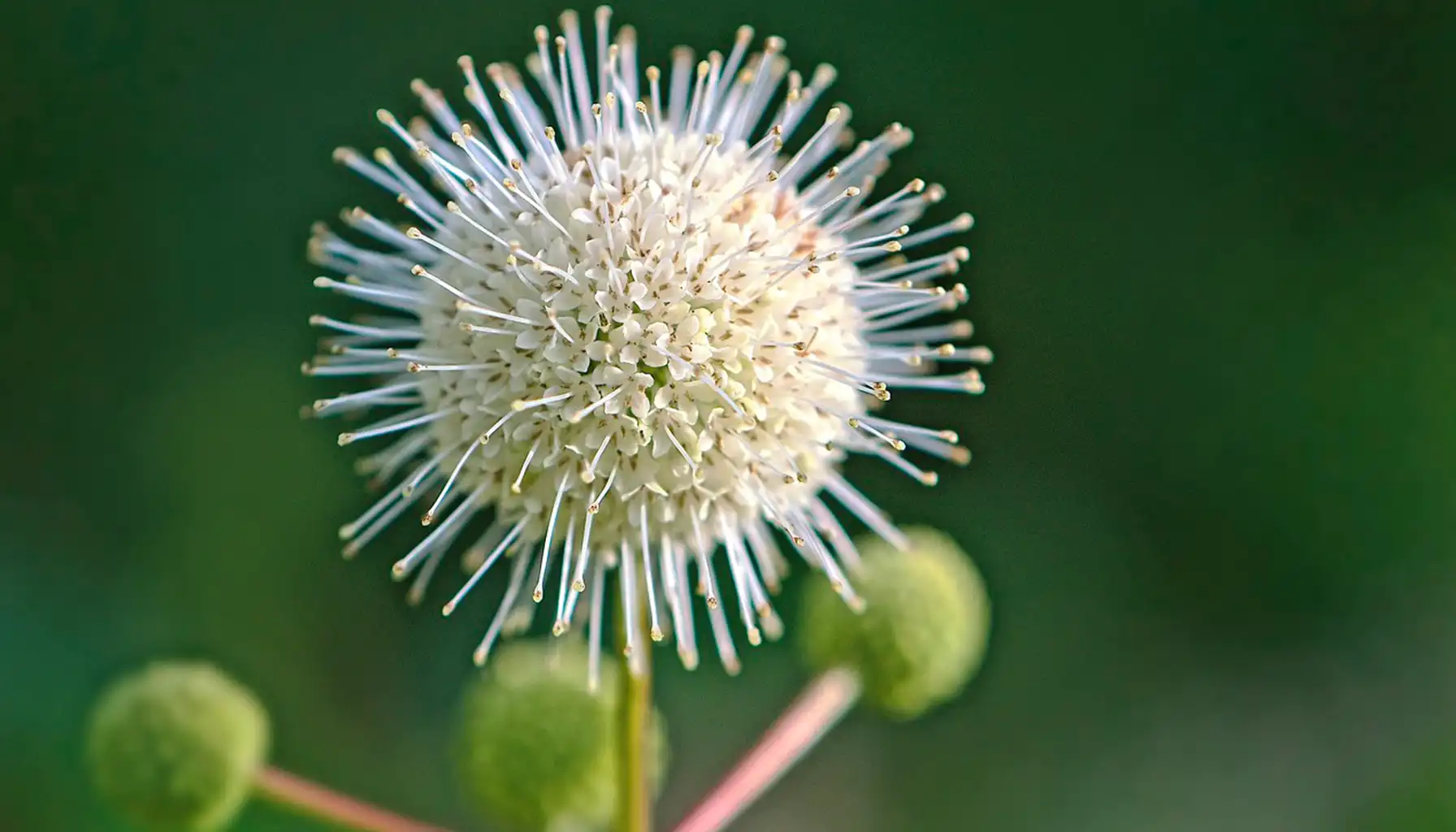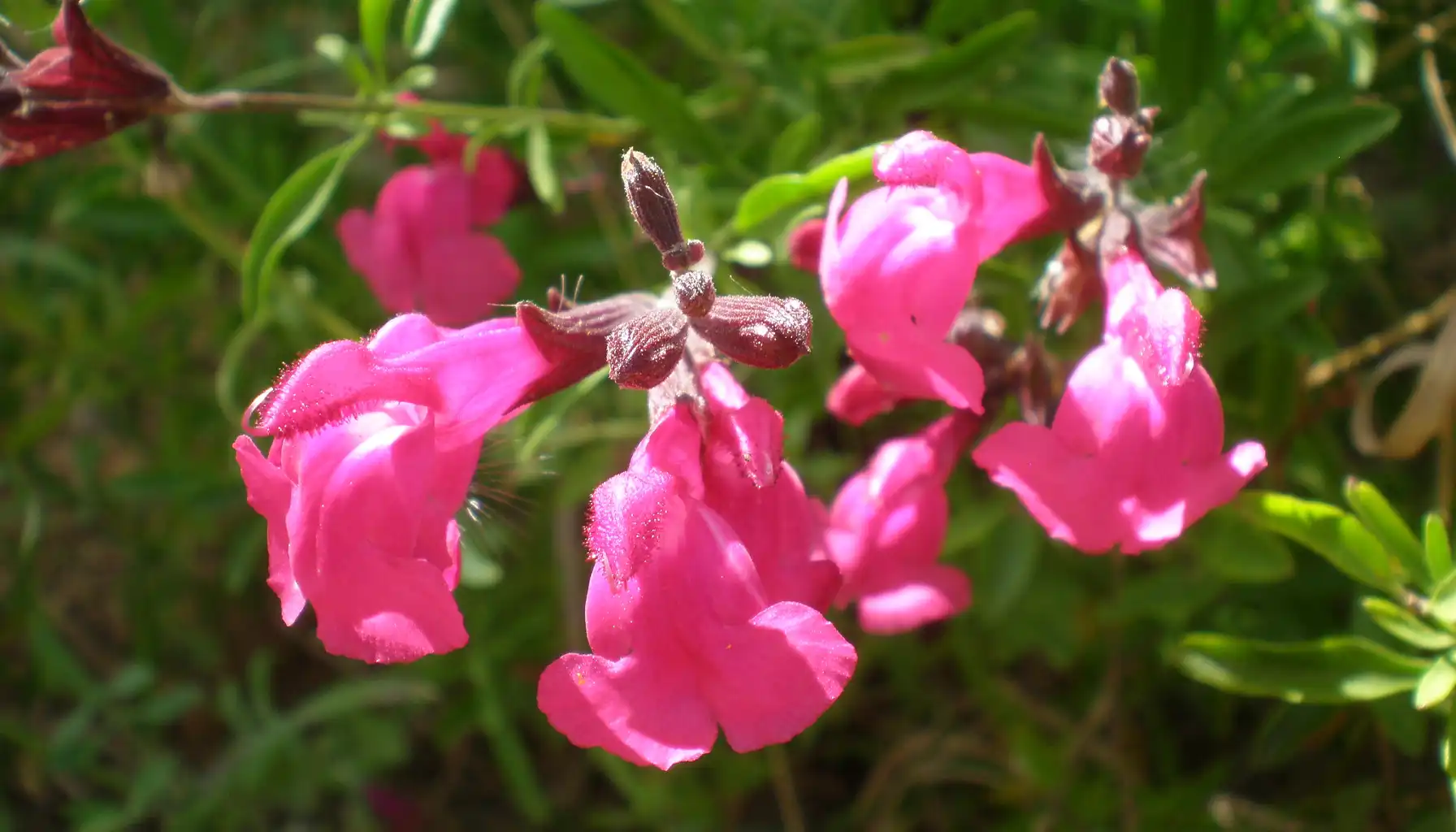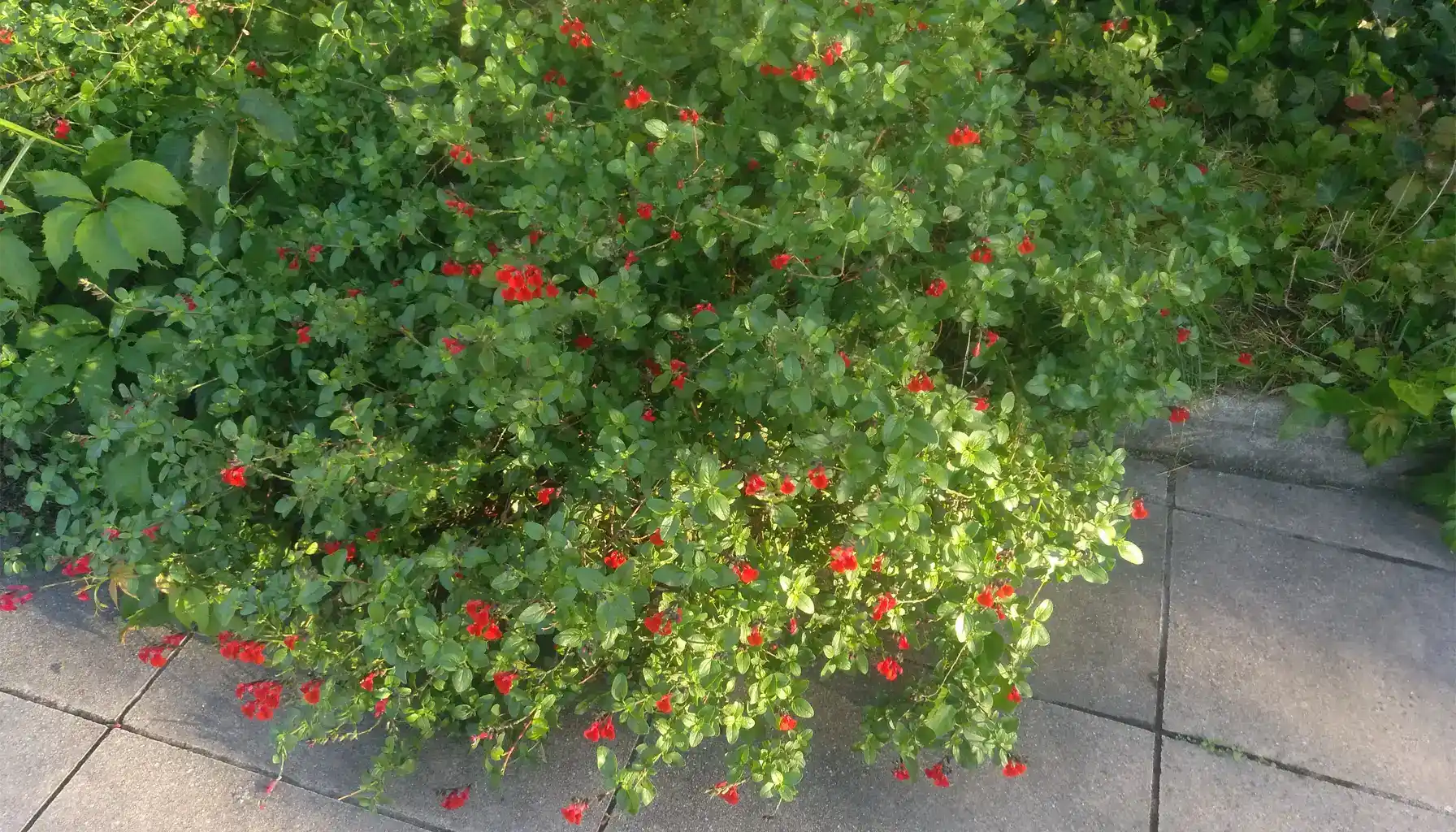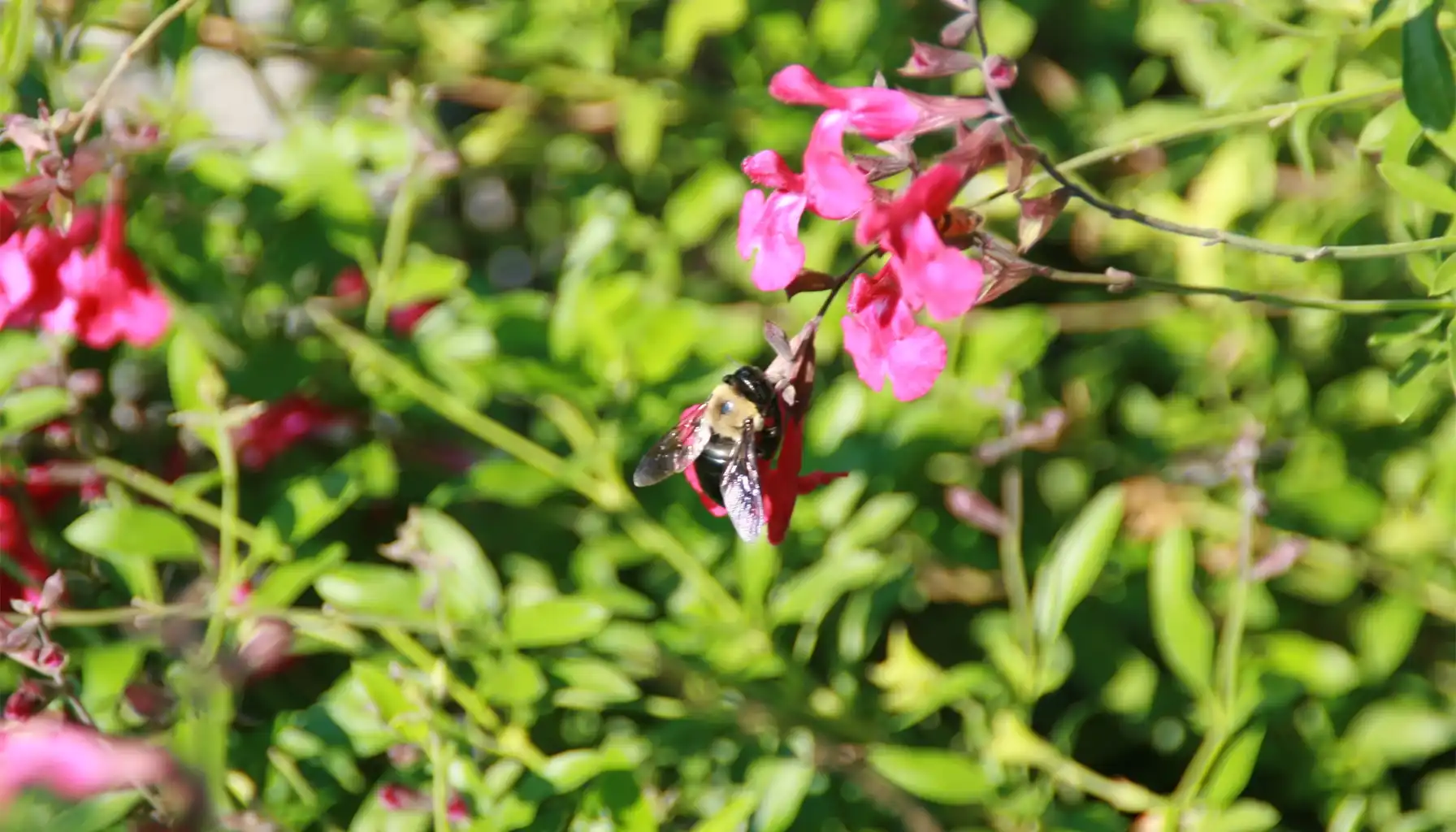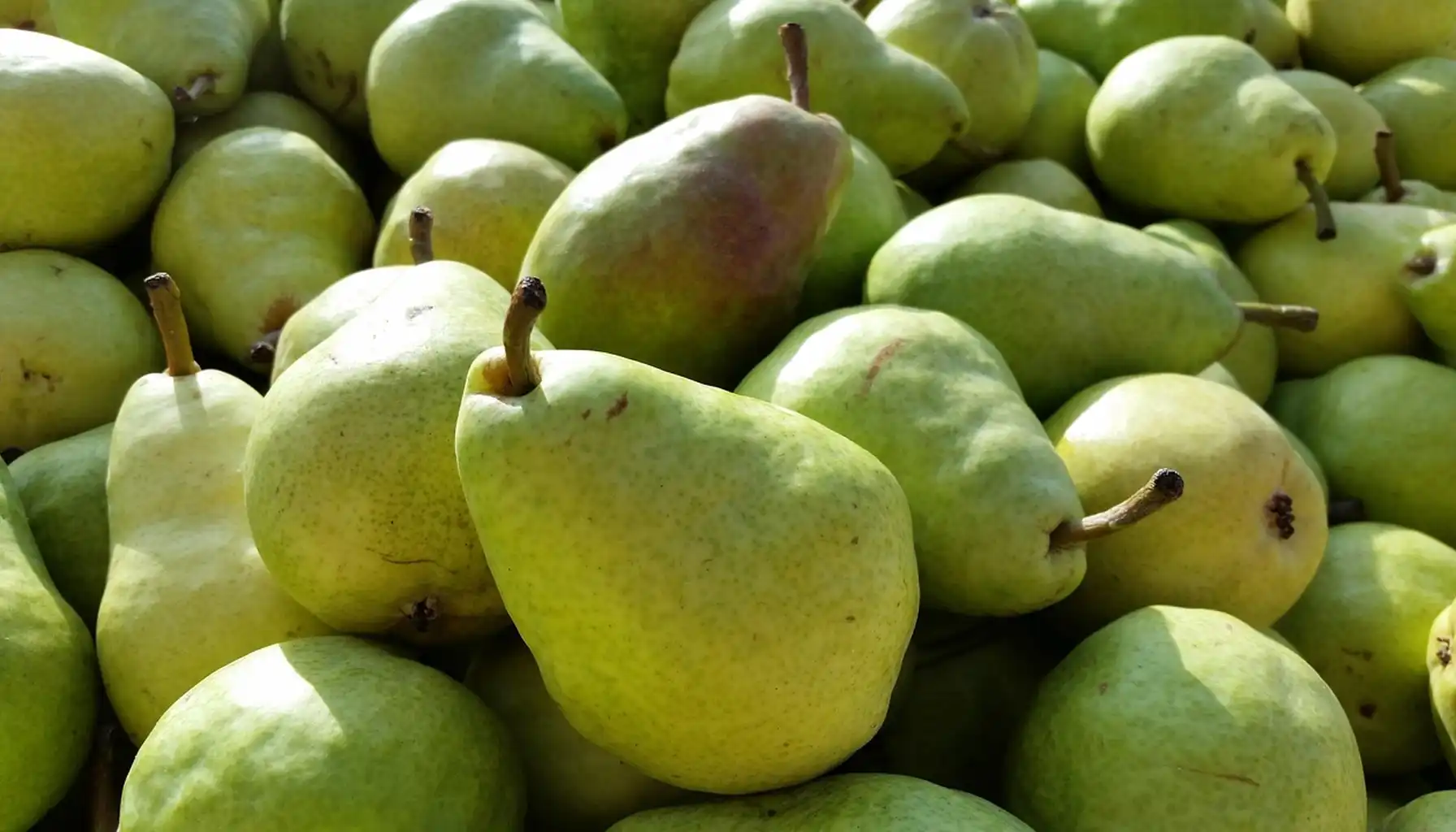The Autumn Sage (Salvia greggii) grows as one of the most colorful and dependable flowering shrubs for warm and dry climates. Many people confuse it with another variety of Scarlet Sage (Salvia coccinea) because of the bright red flowers. If you need a personal plant expert – use the flower identifier. The plant shows strength in hot sun, poor soil, and dry air. Gardeners use it to attract pollinators, define borders, and add vibrant color to every season.
Plant Identification
Salvia greggii (Autumn Sage) belongs to the mint family Lamiaceae. This species grows naturally in Texas and northern Mexico. The species name “greggii” is in honor of Josiah Gregg, who noted Texas geology. In nature, it occupies rocky slopes and dry grasslands where it thrives under full sunlight. The Salvia Autumn Sage plant forms compact mounds covered with small aromatic leaves. From spring through fall, the shrub produces bright flowers that attract hummingbirds and butterflies.
Scientific Name | Salvia greggii |
Type | Evergreen shrub |
Native range | Texas, Northern Mexico |
Height | 2'-3' |
Spread | 2'-3' |
Leaf Shape | Elliptic, Obovate |
Leaf Apex | Obtuse |
Leaf Texture | Smooth |
Flower | 1' |
Zones | 7-10 USDA |
Bloom Time | Spring, summer, fall |
Sun | Full, partial |
Colors & Varieties
The Autumn Sage colors vary widely, from deep red to white and coral. Breeders have developed many named varieties, each with unique shade and form. The plant’s tubular flowers bloom over a long season, often from early spring until frost. The following table lists common color types and their features.
Warm Shades
'Furman's' Red Autumn Sage – classic scarlet form known for strong color and high visibility.
'Playa Rosa' Pink Autumn Sage – soft pastel tones that complement cottage gardens.
'Lowrey's Peach' Coral Autumn Sage – warm orange-pink tone that fits desert gardens.
'Elk Pomegranate' Raspberry Autumn Sage – bright magenta flowers with a long bloom period.
Radio Red Autumn Sage – intense red cultivar with compact shape.
Lipstick Autumn Sage – vibrant red-pink blend, known as Autumn Sage Lipstick in trade.
Cold Shades
'Glimmer Heatwave' White Autumn Sage – clean white flowers that contrast with dark green foliage.
'Ignition' Purple Autumn Sage – deep violet hue with strong landscape presence.
Autumn Sapphire Sage – blue-purple selection for mixed borders.
The plant displays dense foliage and constant movement from visiting pollinators. The leaves emit a faint herbal scent when touched. In close photos, the tubular blooms of Lipstick Autumn Sage and its varieties show vivid contrast with dark stems. The 'Sapphire' offers a deep tone for contemporary designs, while Coral Autumn Sage adds warmth in mixed plantings.
Growing Basics
Sun | At least 6 hours of direct sun daily |
Soil Type | Well-draining |
Soil pH | Acidic, neutral, alkaline |
Soil Moisture | Dry |
Watering | Deep soak every 7–10 days in dry weather |
Spacing | 18–24 inches between plants |
Fertilizer | Light application of balanced formula in spring |
Temperature | Withstands heat up to 100°F |
Cold Hardiness | Survives mild frost in protected areas |
Bloom | Blooms repeatedly |
The Autumn Sage Salvia stays evergreen in mild winters and semi-deciduous in cooler regions. In Autumn Sage Texas landscapes, it performs well under full sun with limited irrigation.
Care Tips
Autumn Sage care requires simple steps. Trim the plant after flowering to maintain a dense form. Remove about one-third of the growth each time. Light pruning after the first bloom cycle encourages new shoots and repeat flowering.
Apply mulch to retain soil moisture and suppress weeds. Avoid heavy, wet mulch around the crown. Soil pH level always affects plant growth. Check the soil before watering; dry soil stimulates deeper roots. Fertilize once in spring with a slow-release product. Too much fertilizer reduces flower production.
Deadhead faded blooms to extend the flowering period. Inspect for spider mites during dry heat. Wash the foliage with water to prevent infestations.
When old stems become woody, cut them near the base in late winter. The plant responds with vigorous new growth in spring.
Cultivativation: Best Practices Revealed
Right Location: Select a spot with full sunlight. The plant needs at least six hours of direct sun each day. Shade reduces flowering and causes weak stems. In cooler climates, plant it in a place that receives morning sun and protection from strong winds.
Prune Regularly: Trim the plant after each major bloom cycle. Cut back the top one-third of the stems to encourage new growth. Remove old or woody stems in late winter. Regular pruning keeps the shape neat and promotes continuous flowering.
Weeds Control: Apply a 2-inch layer of mulch around the base. Organic mulch, such as bark or shredded leaves, improves soil condition over time.
Problems & Solutions Table
Though hardy, Autumn Sage Salvia greggii may show stress in poor drainage or heavy shade. Pests rarely cause serious damage. Use this table to identify issues and responses.
Problem | Cause | Solution |
Fewer flowers | Too much shade | Move the plant to a sunnier spot |
Yellow leaves | Overwatering | Reduce irrigation and improve soil drainage |
Woody stems | Lack of pruning | Cut back by one-third after bloom |
Weak growth | Nutrient deficiency | Add light fertilizer once in spring |
Leaf damage | Spider mites | Spray foliage with water to remove pests |
Winter dieback | Frost exposure | Mulch base and trim dead stems in spring |
Plant Benefits Review
Propagation: Growers propagate Salvia greggii Autumn Sage from stem cuttings or semi-ripe shoots. Each cutting roots quickly in moist, well-drained media. Seeds produce variable colors and growth habits. Cuttings ensure uniformity and predictable bloom tone.
Longevity: Healthy plants live for several years. After four to five seasons, rejuvenate the shrub by pruning low and improving soil drainage. The dry climate of southwestern gardens suits this plant perfectly.
Chill Hours: Autumn Sage has relatively low chill hour requirements because of its native origin in warmer climates.
Landscaping: The shrub fits into rock gardens, borders, and slopes. It attracts hummingbirds and butterflies while resisting deer and rabbits. The Autumn Sage vineyards and Autumn Sage winery landscapes in Texas and California often use this plant for its drought tolerance and vivid floral display.
Colors in Landscaping: The Autumn Sage white form highlights darker backdrops, while Autumn Sage Pink gives liveliness. Autumn sage Radio Red dominate hot color schemes. Autumn Sage Purple varieties cool the palette and mix well with other plants. Designers often mix coral and raspberry forms for contrast.
Food: As with many Salvia species, leaves can be used fresh or dried for seasonings and teas. The flowers are edible. Which plants are also edible?
Ornamental: Nearly evergreen habit, long-lasting and the denseness of its growth. It is useful as a low hedge.
Culture: The Autumn Sage is important in southwestern culture. Native species like this one support pollinators in dry regions. In Autumn Sage vineyards or public gardens, the shrub unites beauty with practicality. Many communities in Texas and the southern United States use this plant for sustainable landscaping.
Regional Importance: Developers have adopted its name in local housing and hospitality projects. Properties such as The Residence at Autumn Sage and Autumn Sage Apartments use the name to evoke calm, color, and natural strength.
The plant forms glowing mounds of red, pink, and purple under clear sunlight. Each variety expands the dry-climate gardens.
Related AI Plant Finder Posts
